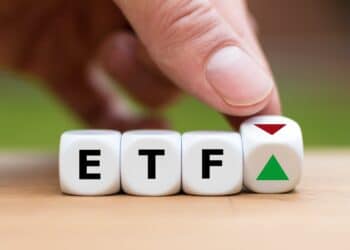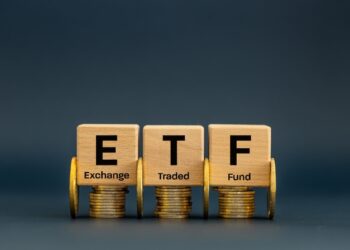Australia’s burgeoning ETF sector is showing no signs of slowing down, despite a volatile start to the year.
Despite taking a few years to gain a foothold in the Australian market, the country’s exchange traded fund (ETF) market is starting to blossom.
Between 2013 and 2015, the sector has seen its funds under management (FUM) more than double, from $10 billion to $21 billion, with monthly inflows averaging between $45 million and $60 million, and issuers are confident the market will double again in the coming years.
Potential for growth
Having weathered the stormy start to the year, ANZ head of ETFs, Kris Walesby, said the sector was likely to continue its upward trajectory, despite inflows slowing down.
“January was an aberration… what’s more interesting is February, so what’s just happened, where that was a smaller month than previous Februaries[in terms of inflows],” he said.
“Even though there were some redemptions, it was actually net-positive in terms of asset accumulation for the month, so you’ve got a situation where almost whatever the storm you put in front of it, it’s still able to push through and that is one of the best leading indications from my experience in the last 10 years of an industry that’s really going from strength to strength.
“We’re $21 billion here, but with the ability to weather that type of negative intensity and still gather assets… despite all those variables, it’s looking like this is one of the biggest potential asset gathering businesses in Australia right now.”
Blackrock’s iShares head, Jon Howie, agreed with Walesby, forecasting continued rapid growth in the sector.
“What we saw in January and early February, there was a massive trend toward risk-off,” he said.
“Overall, what we saw was actually ETF flows continued to come in… locally, given the market is going through a rapid phase of growth and is maturing quite quickly, we’ve seen money continue to come in.
“The flows did slow down a little bit, obviously, when the markets get volatile, people take their foot off the gas a little bit and they wait for a bit more clarity, so the flows slowed down, but they certainly didn’t stop.
“I think we’ve got a couple more years of the very rapid growth that we’ve seen over the last few years, and the ETF industry in Australia can easily double from where it is right now in a relatively short space of time.”
Slow start
While the Australian ETF industry has been growing at a rapid pace since 2012, Howie said regulatory change was a catalyst for the surge in interest in the products.
“The ETF market in the US is enormous and it grew very quickly in the early part of this century,” he said.
“The ETF market in Europe is getting a lot bigger very quickly as well and its growth really accelerated a few years after the US into the late part of the last decade… and then the ETF market in Australia really only got going a couple of years ago.
“For a long time we were sitting around wondering why the ETF market here wasn’t growing as quickly as it was in other areas, and one of the reasons behind that was the structure of the Australian market, people were very comfortable owning direct equities, perhaps more so than in other markets around the world.
“We didn’t have a huge hedge fund industry here and hedge funds were a big part of early ETF adoption.
“But one of the other reasons why it got going and one of the tipping points if you like, was the change in regulation, which banned retrocession, and what we’ve seen in markets around the world, and none more so than in Australia, is that when you change the regulation and ban retrocession, the value proposition of financial advisers moves from being an investment manager and it moves to what we call the proposition of councillor of coach.
“One of the ways advisers can do that and a very simple way they can demonstrate their value to clients is by reducing the total cost of their clients’ investments, and that’s one reason why ETFs have been so incredibly popular in the recent past with advisers.
“It’s a very simple and effective way to reduce the overall cost of a client’s portfolio.”
MSCI EFT client coverage vice president, Tim Bradbury, agreed that Australian advisers had been “a little slow” in adopting ETFs, but noted that usage over the last five years had grown at 40 per cent per annum.
“It’s coming from a low base, but it’s certainly catching up with many other developed markets,” he said.
“I imagine it’s partly [down to the fact that] traditionally, a lot of advisers have picked active managers and they’re now seeing the benefits of buying low-cost passive exposures to build portfolios.”
Adviser education
While the Australian ETF industry has enjoyed a rising tide of popularity in recent times, BetaShares managing director, Alex Vynokur, said adviser education remained an essential component for increasing their use.
“Education is really the number one objective for the industry,” he said.
“When you look at the research that we conduct on a regular basis, it’s [education] really the number one barrier to ETF adoption amongst advisers.
“What we’re finding is the more we invest in education, the more we contribute to advisers being better informed about ETFs, and what role they play in the advisers’ practice or in the investment portfolios of their clients, the more likely advisers are to use ETFs.”
Market Vectors managing director, Arian Nieron, described adviser education as “instrumental”, saying ETF issuers needed to play an active role in boosting advisers’ understanding of the asset class.
“We think it’ll still be a good five-plus years story [before] we see everyone at a mainstream level, across the value chain being well versed in ETFs,” he said.
“Most global ETF issuers like ourselves — we’ve seen most market cycles — are well positioned to be that point of call in terms of education.”
Role of ETFs
With the rise of the ETF asset class, Vynokur noted that advisers have started to take advantage of exchange traded products (ETPs) to protect clients’ investments.
“Advisers are being a little more proactive on the risk management side, using ETPs such as bear funds,” he said.
“We have a few bear funds in the market… and really what those funds are about is giving advisers an opportunity to protect the portfolio on the downside, if they feel the market is choppy, if they feel the volatility in the market has picked up, or they just want to take some risk off the table for clients without having to sell the underlying investments.
“So we’re seeing more tactical usage of ETPs.”
Diversification
While Vynokur said ETPs offered advisers a method of defending clients’ portfolios in stormy market conditions, he added that they give access to a broad range of asset classes that investors may not otherwise have access to.
“ETFs really provide advisers with an ability to build more diversified, more robust, lower cost and more transparent investment portfolios for their clients,” he said.
“The key use for ETFs would be diversifying client portfolios into asset classes that are important, but are otherwise difficult to access, so things like currency, commodities and international equities, those are fairly core exposures that a lot of advisers would like to have in their client portfolios.”
Smart Beta
The development of “smart beta” or “factored” ETFs has provided advisers with additional tools to focus on investments based on specific rules, and attracted inflows to the asset class, Nieron said.
“We’re finding a lot of new business flows are coming to ETFs as opposed to a mass migration out of active into passive [investments],” he said.
“One of the key things that’s played well for us as a firm is really that of strategic or smart beta — where you’ve got a rules-based passive strategy, like our MSCI World ex-Australia Quality index [ETP], where we’ve been able to demonstrate that the index is actually achieving alpha within a rules construct.
“We’re still getting the benefit of low cost and transparency, but they’re [investors] also getting the excess returns.
“In 2016, strategic beta will get more traction and then we’ll see a lot more specialist fund managers try to launch their products on the exchange.”
Short-term solution
While smart beta products give advisers access to ETFs focused on particular market factors, Stockspot chief executive, Chris Brycki, flagged concerns over their usefulness.
“The benefit of smart beta is it creates a good story to sell to customers,” he said.
“We don’t have them in our portfolios, because we think that by focusing on some factors in the market you must be missing out on lots of other factors.
“Studies show that when a lot of smart beta funds launch around the same time focusing on a similar factor, that’s often the signal that that factor is no longer going to beat the market.”





